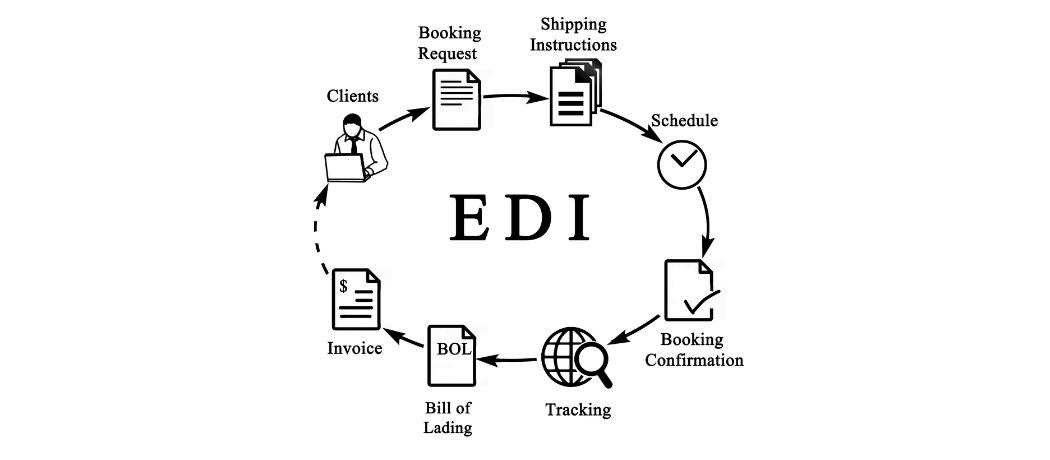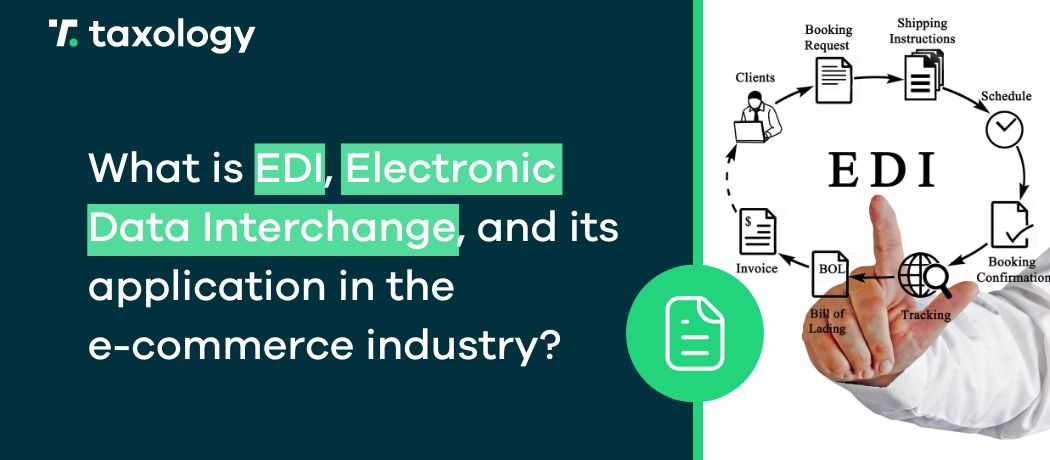France is one of the largest and wealthiest countries in Europe, making it an extremely attractive market for expansion for many entrepreneurs in the e-commerce sector. However, like any other […]
Read in: 5 minWhat is EDI, Electronic Data Interchange, and its application in e-commerce?
- Last update: 15.02.2024
- Published: 22.01.2024
- Read in: 5 min
In the era of digitization, automation is one of the factors significantly increasing the efficiency of an enterprise, and it can be applied in many areas. An example of this is the exchange of information and sending documents throughout the supply chain.
The automation of this aspect is a common practice and has been implemented for many years, and it has its own term—EDI, Electronic Data Interchange—which we have developed in the article below!
From this article, you will learn:
- What is EDI, Electronic Data Interchange?
- How does EDI work?
- How to utilize electronic data exchange in the e-commerce industry?
- What challenges are associated with implementing an EDI system?
- What are EDI standards?
What is EDI, Electronic Data Interchange?
Electronic Data Interchange, EDI, refers to the automatic flow of electronic documents in the supply chain within a company or between business partners.
EDI, involves, among other things, the transmission of documents, the flow of information, issuing and sending invoices, and communications directed to customers.
EDI System in E-commerce
Electronic Data Interchange in the e-commerce industry, but not only, primarily serves the exchange of information between different IT systems of business partners. This, in turn, leads to increased efficiency through automation and optimization of communication, the effects of which are:
- Time and energy savings—employees do not have to devote their attention to preparing and sending documents. It happens automatically. Moreover, there is a faster order fulfillment, and as a result, the shipping and delivery of goods to the customer.
- Money savings—the electronic data exchange system does not require paper documents, which saves resources on printing and courier or postal services.
- Reduction of potential errors—automation leaves no room for human errors. If an error or gap is found in the system and it is fixed, it should not reappear.
- Easier data analysis—electronic data exchange processes can be easily tracked, which contributes to easier analysis.
It should be added that implementing EDI also gives a competitive advantage over enterprises that do not yet have this automation.

Challenges Associated with EDI
Although the electronic exchange of data between business partners provides many benefits, one cannot forget about the entry threshold, which is equivalent to implementing EDI, meaning the purchase and creation of the appropriate infrastructure, as well as hiring an employee or outsourcing to an external company their configuration, and also occasional updating and repairs in case of errors.

Need help with VAT or e-commerce accounting?
Give us a call and we’ll take care of the rest! Regardless of whether it is VAT or VAT OSS – registrations, settlements or declarations – or accounting in e-commerce!
Schedule a consultationElectronic Data Exchange Standards
To be effective, electronic data exchange must be conducted in a predetermined standard, which allows for generating and reading data during the exchange of documents. Therefore, if several companies related to the supply chain use different standards, document exchange may be problematic because the transmitted information will not be processed correctly.
Over the years, many formats have gained popularity depending on the industry or region due to such a need.
However, it should be noted that EDI standards can be divided into proprietary and public, where the former are standards developed for the needs of a particular company or specific industry and are not widely available. In contrast, the latter are standards that are widely available and have been developed for one or more industries.
- UN/EDIFACT (United Nations/Electronic Data Interchange for Administration, Commerce, and Transport) – a format introduced for use by the UN.
- TRADACOMS – EDI standard used in the United Kingdom
- ASC X12 – ANSI (American National Standards Institute) compliant standard, mainly used in North America, used in many industries.
- UCS – American electronic data exchange standard, aimed at the food industry.
- INDIE – American standard aimed at the transport industry.
- HL7 (Health Level-7) – EDI standard, enabling document exchanges in the medical industry.
How Does EDI Work?
It should be emphasized that electronic data interchange does not define the method of document transmission. This concerns the technology chosen by the parties for direct communication and which will enable document exchange, e.g., HTTP, FTP, or AS2.
EDI vs. API
EDI should also not be confused with API (Application Programming Interface). Comparing in broad terms, EDI refers to the exchange of documents and is used in logistics, trade, or manufacturing. In contrast, APIs serve to enable two applications to communicate and solutions under this sign are common in the IT industry, enabling integration, for example, of programs and platforms.
Moreover, EDI communications concern previously specified formats, such as invoices or other documents exchanged within the supply chain. On the other hand, APIs allow for the transmission of a much wider range of data and formats. It is much more flexible.
What is EDI, Electronic Data Interchange? - Summary
Electronic Data Interchange, i.e., EDI, is an automated process of transferring documents and information between participants in the entire supply chain in real-time.
EDI messages, i.e., documents exchanged as part of electronic data interchange, include, among others, order confirmations, invoices, delivery notices, or shipping notices. It all depends on the industry.
It’s also worth emphasizing that the information sent in EDI must be in a universal format that the communication parties will be able to read. As a result, so-called EDI systems have been developed, adapted to different industries—retail, medicine, or transportation.
The goal of EDI is the secure exchange of data and the automation, optimization, and acceleration of processes related to the flow of information in the supply chain. The result of this is, among other things, faster order fulfillment and improved supply chain functionality.
However, it must be remembered that in conducting business, data transmission is not the only key element. An example of another is VAT, which is related to the sale of goods and services. If you want to learn more about this topic, check out our articles or schedule a consultation and entrust our specialists with registration, settlements, or taking care of your VAT declarations and VAT OSS. We are also happy to help with e-commerce accounting!




